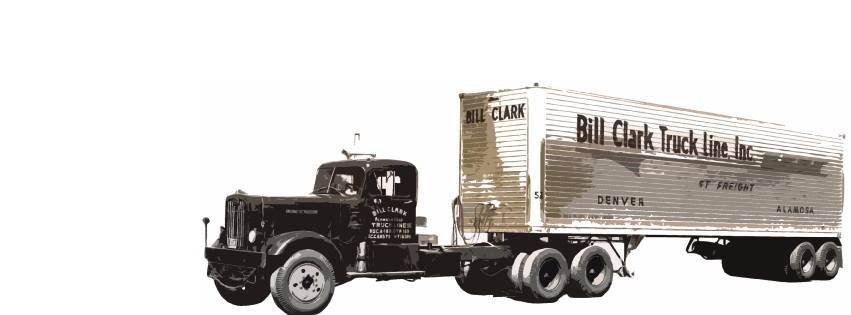Oldest operating truck line in Colorado began in SLV 90 years ago

ALAMOSA —World War I brought prosperity to the nation’s largest alpine valley, located in southern Colorado. The San Luis Valley was becoming a fast growing area with a melting pot of ethnicities putting down roots. The area was originally settled by Spanish descendants, who traveled north from settlements in New Mexico and established the oldest towns in Colorado. Shortly after German, Dutch and Japanese also took to the land.
Alamosa, built by the Denver and Rio Grande Railroad in one day, had grown and become the hub of the San Luis Valley. The founding of Adams State College Normal School by Billy Adams in 1925 solidified its future as the center for commerce. Colorado already had a strong railroad system, but in 1921 the state began building concrete highways, which would forever change the way freight could be shipped. The first truck line was started by George W. Spriesters, Valley representative for Chevrolet cars.
It was during the same time in the roaring twenties that Alamosa native, William (Bill) Clark , came up with an idea that would change his life. Bill was talking one day with his friend, Alamosa businessman John Burt who founded Chapparal Tires, about Bill’s desire to start a truck line to compete with the railroad, Mr. Spriesters new freight line, and with the underlying reason of hauling bootleg liquor into the Valley. A business was born.
Colorado spearheaded prohibition in 1916, which preceded the 18th Amendments national adoption in 1920(also known as the Volstead Act). Prohibition forbade the “manufacture, sale and transportation of intoxicating liquors”. Liquor was still in demand and the main supplier were railroad workers sneaking it on trains. Mr. Clark first began hauling liquor in his car and hauled it over mountain passes for several years.
Business was good and not much attention was paid to Mr. Clark. As his business grew the railroad tipped off law enforcement, drawing attention to Bill, allowing railroad bootleggers the ability to operate without attention from the law. To remedy this, Bill purchased a 2 ton truck in 1929. He began hauling significantly more freight into the Valley, and consequently, more liquor. Competing with the railroad in two markets.
Upset by the dent in their profits, the Denver and Rio Grande Western Railroad motivated their Union members to spread flyers to all the businesses in Alamosa, demanding they do not do business with Bill Clark. This plan backfired because Mr. Clark provided such consistent hauling (and a stipend of alcohol libations) to his customers that they continued with business as usual, and law enforcement attention was shifted toward the railroads interest in the matter.
As the depression hit the area, it was the bootleg business that paid the bills and kept the small freight company in competition with the freight monopoly that was run by the railroad. The reference was made more than once that the prominent businessman who had affection for cigars was a Saint by day and Devil by night. Bill Clark married Ms Elsie Leontine Koch in Center, CO on the sixth of June, 1930.
Prohibition ended when a constitutional amendment was approved by Colorado voters in 1932 and made liquor control the purview of the state. The rest of the country followed suit, ended prohibition nationally in 1933. This legitimized the bootleg freight, and the company continued to grow.
The railroad decided to establish their own truck line called Rio Grande Motorways and was a major competitor to Bill Clark Truck Lines for about a decade. Bill Clark succeeded in providing steady, consistent service, thanks to an employee named Ove Nielsen.
In 1936, Bill Clark became progressively ill, ending in his death from Tuberculosis at age 32. This unfortunate demise left Elsie Clark to run the business with Ove Nielsen. Romance bloomed and in 1937 they were married, and had a son Paul (Bud) Nielsen, who eventually took over running the business. After an 18 month Teamsters Union strike, they lost all 7 Denver drivers in 1970 and Bud Nielsen drove all freight overnight until 1972 when they hired Jack Stansall to help. The two men ran the business successfully for decades.
The current Bill Clark Truck Lines building is located at 311 6th Street in Alamosa and was designed by a one armed WWI Veteran Gerald A. Crawford. Gerald was partners with George Van Iwarrden, and this contract was one of the first for Valley Construction Company. The concrete blocks of the building were the design of Gerald Crawford and are the very first blocks to come off the production line of the concrete company he owned.
The Nielsons sold the company in 1997 and today the company continues to be a family owned and operated business by LeRoy and Rosalie Martinez, Jeff Martinez, Marcie Schulz and Brad Flavin. Bill Clark has three main terminals in Alamosa, Pueblo and Denver, and delivers to hundreds of locations in Colorado. It boasts 18 trucks and 22 employees, including General Manager Kevin Fuller and Finance Manager Catherine Hall. For more information on services and to get a free quote, visit www.bctl.us



